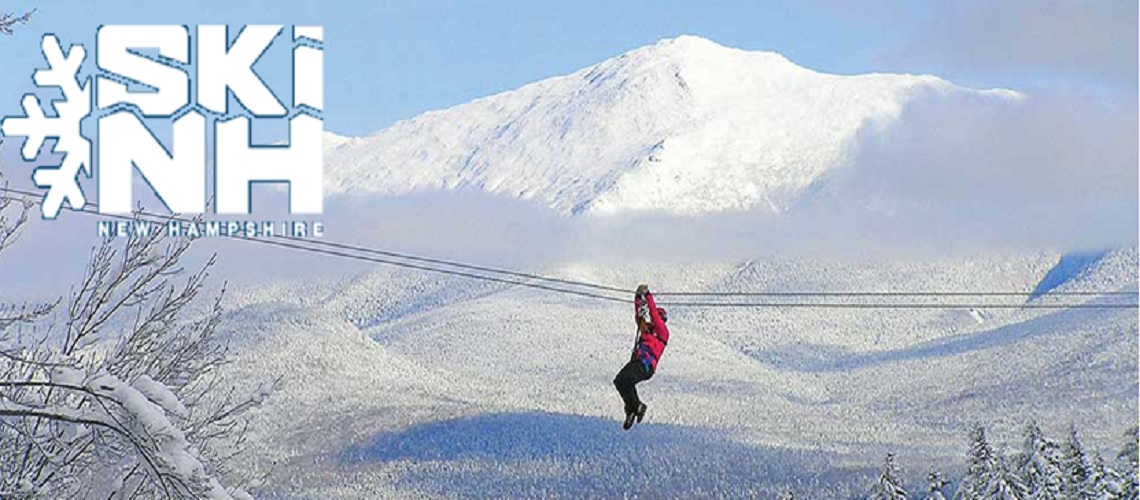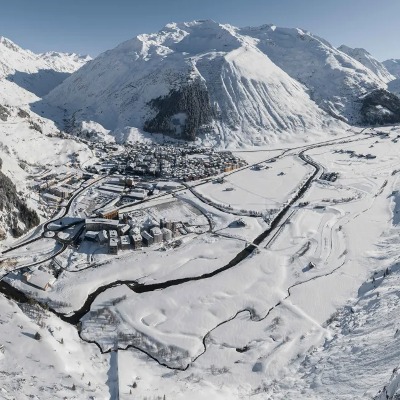New Hampshire Issues COVID-19 Ski Area Regulations

The Governor's Economic Reopening Taskforce has issued guidelines for New Hampshire Ski areas
The intent of these recommendations is to reduce transmission of COVID-19 among employees and guests; support healthy business operations; and maintain a healthy work environment. In addition to strict adherence to U.S. Centers for Disease Control and Prevention (CDC), Equal Employment Opportunity Commission (EEOC), Occupational Safety and Health Administration (OSHA) guidance, and US Food and Drug Administration (FDA) the State of New Hampshire recommends policies and procedures to protect consumers and employees, including: General Guidance to Protect Employees and Consumers:
1. Review and follow the Universal Guidelines for All New Hampshire Employers and Employees.
2. Review and follow the NH Retail guidance.
a. If providing Food Services, follow NH Food Service Industry guidance.
b. If providing lodging (i.e., resorts), follow the NH Lodging guidance.
3. Review and follow CDC guidance for businesses and employers.
4. Review and follow CDC guidance for cleaning and disinfection.
5. Staff must wear cloth face coverings over their nose and mouth at all times when indoors including in public locations where 6-foot distancing cannot be maintained, and in shared staff areas (e.g. break rooms), and when interacting with guests. People wearing face coverings should not touch their eyes, nose, mouth, or face, or adjust their face covering without first sanitizing hands. After touching face or adjusting face covering, hands must be sanitized.
6. When indoors all guests shall wear a cloth face covering over their nose and mouth when in any lodges, facilities or in public spaces with other individuals present unless they are eating or drinking in seated and appropriately socially distanced locations.
7. When outdoors, guests and staff shall be required to wear a cloth face covering over mouth and nose to protect others when on the premises of the ski resort unless they are skiing on a trail, physically distanced (physically distanced 6 feet or more), eating or drinking. This includes using cloth face coverings while waiting in lines, on chair lifts, and in other public locations where 6 feet of physical distance from others may not always be possible or maintained.
8. Alcohol-based hand sanitizer must be made readily available and must be placed throughout the ski area, including on entry, in key walkways, in food and beverage locations, in shops, at checkout locations, and at exits. Hand sanitizer must also be provided in non-public settings such as maintenance areas, workshops, offices, and break areas. .
9. Commonly touched indoor surfaces, work areas, and public areas should be frequently cleaned and disinfected according to CDC guidance every 2 hours and at the end of each shift.
10. Staff and guests should maintain a distance of at least 6 feet from others at all times even when wearing a cloth face covering.
11. Ski area employees shall make efforts to remind visitors to wear their cloth face coverings and abide by social distancing policies.
Employee Protection:
1. Employees must be provided with education and training around safe practices as it relates to social distancing, cloth face mask use, hand hygiene, sanitation (cleaning and disinfection policies), and illness policies outlined in the Universal Guidance and other guidance affecting business operations.
2. Employees must be screened (questioned) about symptoms of and risk factors for COVID-19 before each shift as outlined in the NH Universal Guidelines. As indicated in the Universal Guidance, staff with any new or unexplained symptoms shall not be allowed to work.
3. Require all employees to report any symptoms of COVID-19 or close contact to a person with COVID-19 to supervisor.
4. Staff should be instructed to maintain a distance of at least 6 feet from others (staff and customers) at all times. Prohibit congregating in break rooms or common areas and limit capacity of such areas to allow for a safe social distancing of at least 6 feet whenever possible. Weather permitting, breaks and lunches should be outdoors when possible.
5. Shared tools and equipment used should be cleaned and disinfected after each use.
6. Employees should frequently practice hand hygiene throughout the day, including upon arrival at the facility, before and after going to the bathroom, before and after touching their facemask or face covering, before and after eating, before and after food service, and prior to leaving the facility for the day.
Consumer Protection:
1. All ski areas should have a pro-active communication plan to educate guests prior to their visit about the health and safety practices at the venue and what the guests need to be aware of when they arrive. Such communication plans shall include, but not be limited to, online methods (e.g., website, social media sites), email, print or other electronic communication, that provides ski area information, reservations or confirmations to the guest.
2. Ski areas should build 6 feet of social distancing and capacity controls into all aspects of indoor and outdoor operations, including within lodges and other indoor facilities, and at outdoor facilities and waiting lines (including ski lift lines). .
3. Guests and visitors should be presented with the following questions when purchasing or accessing their daily lift ticket or trail pass, and prior to check-in for any longer-term/overnight stays at ski resort facilities. A version of this checklist shall be on the area’s website and be included in reservation confirmations. If guests answered yes to any of these questions, they will be asked to not put employees and other guests at risk and to come back another day.
a. Do you have any of the following symptoms of COVID-19:
i. Fever (a documented temperature of 100.4 degrees Fahrenheit or higher) or are feeling feverish;
ii. Respiratory symptoms such as a runny nose, nasal congestion, sore throat, cough, or shortness of breath;
iii. General body symptoms such as muscle aches, chills, and severe fatigue;
iv. Gastrointestinal symptoms such as nausea, vomiting, or diarrhea; or
v. Changes in your sense of taste or smell?
b. Have you been in close contact with someone who is suspected or confirmed to have had COVID-19 in the past 14 days? (Note: healthcare workers caring for COVID-19 patients while wearing appropriate personal protective equipment are not considered to have a close contact exposure and should answer “No” to this question).
c. Have you traveled on non-essential travel in the past 14 days outside of New Hampshire, Vermont, Maine, Massachusetts, Connecticut, or Rhode Island (this includes any international travel or travel by cruise ship and any domestic travel, within the US, outside of NH, VT, RI, CT, MA or ME, regardless of the mode of transportation)?
4. Signage must be prominently posted informing customers about symptoms of COVID-19 and guests/visitors should be asked to:
a. Remain home if experiencing symptoms of COVID-19 (list symptoms of COVID-19);
b. Keep a safe indoor distance of at least 6 feet from other staff and guests visiting the ski area; and
c. Practice frequent hand hygiene/washing.
d. Wear cloth face coverings over their mouths and noses to protect others when in public locations (indoors or outdoors) and social distancing is difficult to maintain.
5. Personal possessions (i.e. boot bags or lunch coolers) will be discouraged from being brought inside any public space or building at a ski area. Such possessions should not be left unattended in any indoor space or building.
Business Process Adaptations: .
1. Capacity limits for indoor and outdoor facilities and operations shall be established and managed so that appropriate social distancing is able to be safely maintained with 6 feet of separation between guests and staff at all times. Family members (e.g. a parent and child) and related parties are allowed closer than 6 feet to each other.
2. Admission limits to indoor and outdoor facilities and operations will be determined for daily and hourly capacities to ensure appropriate social distancing pursuant to the Universal Guidelines, Retail Guidance, Food Service Guidance and Child Care Guidance. Advance reservations and electronic purchase of lift tickets, trail passes, rentals and lessons are strongly recommended.
3. Where possible, indoor and outdoor facilities and operations shall clearly mark physical distancing spaces/guidelines with floor/ground markings, seat markings, or signs. This will properly result in fewer indoor seats for guests at ski areas. Avoid large areas of congregation and ensure appropriate social distancing in any changing areas and/or restroom facilities.
4. Visitors and guests will enter and exit facilities to ensure one direction foot traffic flow, where possible. One-directional flow will be encouraged at all facilities, including clearly marked ingress and egress points and easy-to-understand directional signage that will show the direction of traffic flow.
5. Utilize touch-free/contactless payment options when possible, reducing face-to-face purchase transactions. Guests should purchase tickets, schedule child care services or reserve rentals and lessons online whenever possible.
6. Place Plexiglas or other types of physical barriers/hygiene screens between guests and staff at point of sales/service who are potentially in frequent close contact with others wherever practical to reduce exposure to a person’s respiratory droplets. Clean and disinfect the barriers/hygiene screens regularly according to established schedules.
7. Any seating or furniture must be configured in order to maintain physical distancing between unrelated parties. Family members and related parties may be seated together and they must be 6 feet apart from unrelated parties, both side-to-side and front-to-back.
8. Where possible, indoor and outdoor lines or areas of potential congregation (e.g., chair lift operations) should have demarcations and space for guests to stand/wait so that individuals or related household groups are spaced at least 6 feet from others; this includes maintaining appropriate distance side-to-side and front-toback. When practical, chair lift operations, therefore, will need to space out and separate multiple lines to ensure appropriate physical distancing.
9. Limit surfaces touched by visitors and employees, i.e. leave doors open where possible, no access to public water fountains and remove lids from trash cans.
10. Lift Operations
a. Face coverings will be required in all lift lines and while loading, riding, and unloading the lift. .
b. Family members and parties who have traveled together are allowed to ride the lift together. Placing strangers together on a lift is strongly discouraged and should be avoided as this will put unrelated individuals in close contact with each other. This will result in reduced chair lift operations capacity and longer lines, which ski facilities must take into consideration when determining capacity limits and number of allowable daily reservations.
c. Enclosed cabin lifts (e.g. gondolas) with a maximum of 4 passengers will not have a singles line; shall keep their windows open, and; shall only carry family members, related parties and cohorts. Gondolas with a maximum capacity of 8 passengers shall also keep their windows open; encourage only family members and related parties in each cabin; and, allow up to two individual guests who are not part of a related cohort to ride in a cabin as long as proper social distancing can be maintained. All guests shall be required to use face coverings on such lifts and unrelated passengers must maximize physical distance between each other.
d. Lift operations staff will use appropriate protections (face coverings, barriers, etc.) similar to indoor operations, depending upon tasks and/or locations that may not allow social distancing.
e. In order to disperse people and maintain social distancing upon unloading the lift, signs may be deployed (at the base and summit of the lift) encouraging people to move away from the unload area as soon as they disembark. Staff should be present to monitor the loading and unloading process and ensure crowds and congregation is avoided; this may involve multiple staff members to assist with safe physical loading/unloading and others to monitoring lines and avoid crowding and close contact.
11. Ski Area Shuttle Use
a. Signage must be placed at shuttle bus locations ensuring passengers with COVID-19 risk factors for exposure know they should not board the bus (see above signage section).
b. Limit capacity and maximize space between riders –unrelated individuals should avoid sitting in the same or adjacent seats.
c. Single seating shall be available for guests as well as grouped seating for riders who are together or a family.
d. Passengers should not be seated within 6 feet of the bus driver – this may require keeping the front rows/seats empty. Consider installing physical barriers in the driver area for separation between passengers and the driver – such barriers should not obstruct the view while driving.
e. Shuttle drivers and passengers shall all be required to wear face coverings over their nose and mouth at all times while boarding, riding, and exiting the bus/shuttle. .
f. Shuttle windows shall be kept open, when possible. If windows are unable to be opened, then external air should be brought in through vehicle ventilation system; avoid re-circulation of indoor air.
g. High touch areas should be cleaned and disinfected after each transport.
h. While waiting for the shuttle, guests shall maintain social distancing.
i. Boarding and unloading should be performed in an orderly process to avoid passengers unnecessarily walking past and coming in close contact with others.
j. Hand sanitizer should be made available for guests when boarding and exiting the shuttle.
12. Participants in ski school instructional classes, coaching groups and other educational activities shall be required to follow all guidance in this document, including the wearing of face coverings and maintaining 6-foot physical distancing, and should follow the NH Amateur & Youth Sports guidance. Class size should be limited to avoid large class sizes, and for larger classes the group should be split to create smaller separate cohorts.
13. Competitions – all officials and participants shall be required to follow all guidance in this document, including the wearing of face coverings and 6-foot physical distancing, and additionally will adhere to the following modifications to competition operations:
a. Mass starts will not be allowed;
b. Teams will remain in their cohort groups;
c. Masks must be worn in start/finish zones by coaches, officials and athletes, other than while directly competing;
d. Onsite awards ceremonies will not be allowed, and;
e. Amateur & youth sports guidelines shall be followed.
14. Ski equipment rental centers at ski areas shall also limit capacity so that social distancing may be maintained and face coverings will be required by guests and employees. All rental equipment will be disinfected after each use. Hand sanitizer should be made available and used by guests and staff before and after each rental fitting.
15. Music and other forms of base lodge area entertainment shall only be permitted outdoors, and must follow the NH Performing Arts Venue guidance.
16. Retail settings must follow the guidelines outlined in the New Hampshire Retail Store Guidance.
17. Any food service offered at a ski area shall follow the New Hampshire Food Service Industry Guidance.
18. Child care services shall follow the New Hampshire Child Care Guidance.
19. Lodging and overnight accommodations must follow NH Lodging guidance.













